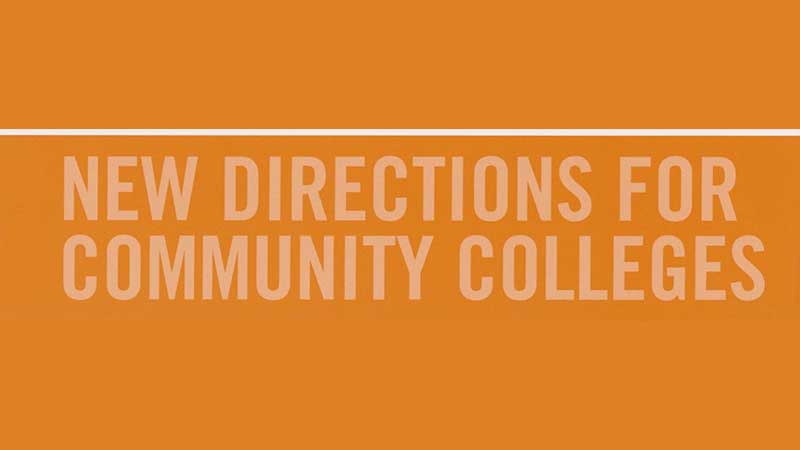Abstract
This chapter summarizes trends, themes, and lessons from this volume and key credentialing initiatives supported by Lumina Foundation.
This chapter looks across the trends, themes, and lessons described in this volume and those culled from the experiences of community colleges that have been part of several Lumina Foundation‐supported initiatives focused on credential innovation since 2013. My position as Strategy Director for the Future of Learning and Work at Lumina Foundation has afforded me a unique platform to follow closely the emerging environment for community colleges.
Taken together, the five chapters paint a dynamic picture of the tremendous opportunities and challenges facing credentialing in community colleges, now and in the future. This climate of disruption is occurring on many fronts—and shows no sign of letting up. Many stakeholders will be affected: students, workers, employers, educational institutions, policymakers, learning support‐service providers, and technology developers. Most importantly, the credential market will need to accommodate considerable variety and change. The work ahead is for community colleges to architect a flexible system able to respond to shifts in the demand for skills training that will accompany both tight and loose labor markets and variable macroeconomic conditions.
In this complex environment, Chapter 1 reminds us that community colleges will need to build credentials that respond to five important imperatives for change:
- Unbundle learning. Credentials that are competency‐based, employer‐aligned, and innovatively delivered will require unbundling degrees into modularized learning units to enable the delivery of a variety of credentials. Many will be short and be “rebundled”—stacking shorter credentials into larger ones.
- Integrate academic and workplace learning. The new era of work and learning will require foundational knowledge and skills that are frequently built through the liberal arts academic disciplines, as well as specialized knowledge and skills built through technical programs and the workplace. Integrating academic and workplace learning will provide learners with both educational and career pathways.
- Focus learning for learners and lifelong learning. Learners will need to pursue further education and learning throughout their lives and maintain the currency of their skills to improve their ability to advance in their careers. A requirement for lifelong learning will be the case in virtually all industry sectors and affect all workers. Workplace changes will drive this need, as changing technologies and labor market needs will require workers to adapt their skills. The “60‐year curriculum” in which individuals begin their learning careers in their teens, continue learning throughout their work years, and continue their education during retirement, is an apt terminology to describe learning in the new era of work.
- Offer competency‐based credentials. Competency‐based credentials allow learners to progress based on demonstrated mastery of content, regardless of time, place, or the pace of learning. Competency‐based strategies provide flexibility in the way that credit toward credentials can be earned or awarded, and provide learners with personalized learning opportunities such as online and blended learning. Framing credentials around clear competencies will better align the credentials offered by community colleges with the growth of competency‐based hiring processes among employers.
- Recognize the emergence of a new quality assurance model. To support the credentialing marketplace, a variety of quality checkpoints will be needed. These include accreditation of credential providers and programs by third‐party agencies, more accurate tools to assess learning, and verification of learning acquired from multiple sources such as educational institutions, work, military learning, and self‐study.
As discussed in Chapter 2, there already is a push for college programs to provide shorter credentials that can be stacked—or built upon each other to create a larger credential—and embedded into degree programs so that they lead to structured career pathways. A variety of credentials can comprise these pathways, including digital badges, certificates, certifications, and college degrees. Community colleges will find more opportunities to design and reconceive programs in the future, and a set of well‐packaged credentials will create a tapestry of milestones that depict the knowledge, skills, and abilities a worker‐learner will have. Increasingly, these credentials will be verified by more accurate assessment tools—and portfolios of an individuals’ learning achievements will be more easily apparent through portable learner records that compile and verify learning acquired from multiple sources.
